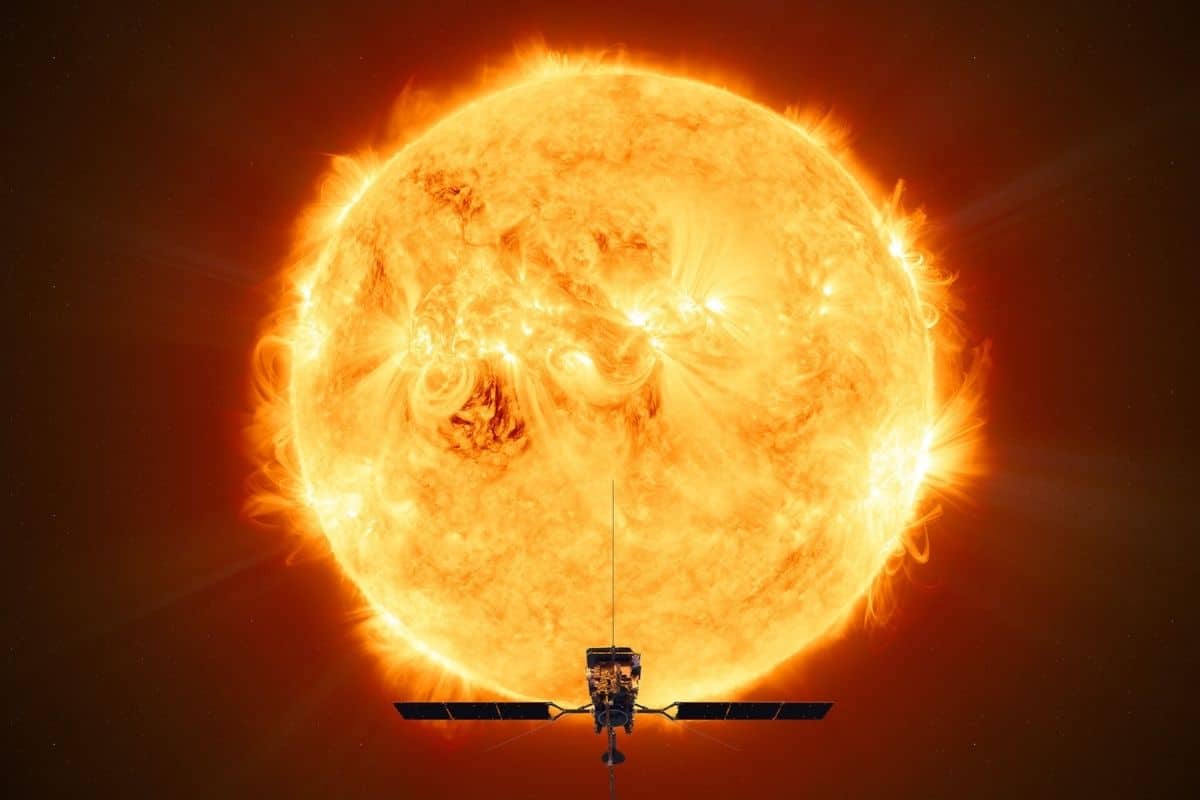

The images, which are ten times better than what a 4K TV can display, were shot from 75 million kilometers away; exactly halfway between the earth and the sun.
ESA’s Solar Orbiter has been heading for the sun for several years now. An exciting mission. Because while various rovers and spacecraft have given us a picture of what some planets and moons in our zone system look like, our parent star still remains puzzling. New images change that somewhat. Because the Solar Probe shows our star in truly unprecedented detail.
The images
Thanks to the European spacecraft, we now have the closest pictures of the sun ever taken. It therefore reveals the finest details of the star’s outer atmosphere; the so-called corona. The impressive images were taken in early March, when the Solar Orbiter was exactly halfway between the Earth and the Sun, at a distance of 75 million kilometers from both bodies.

Our sun, seen through the eyes of Solar Orbiter in extreme ultraviolet light from a distance of about 75 million kilometers. The image is a mosaic of 25 individual images taken on March 7 by the Extreme Ultraviolet Imager instrument. Image:
ESA & NASA/Solar Orbiter/EUI team; Data processing: E. Kraaikamp (ROB)
Above is the beautiful photo of our mother star. The photo was taken by the Extreme Ultraviolet Imager (EUI); one of the powerful instruments the Solar Orbiter is equipped with. In total, this image contains more than 83 million pixels. For comparison; this image has a resolution that is ten times better than what a 4K TV can display.
This can be seen
What stands out are, among other things, the dark filaments that shoot up at the top right and bottom left edges. These are so-called prominences; intertwined magnetic field lines that hold matter from the sun in a whorl or arc. During eruptions, huge amounts of coronal gas are thrown into space, which can lead to stormy space weather.
SPICE instrument
In addition to the EUI, the SPICE instrument (Spectral Imaging of the Coronal Environment) switched on for a while. SPICE is designed to study the layers in the sun’s atmosphere — all the way from the outer corona to a layer known as the chromosphere. The instrument does this by looking at different wavelengths of extreme ultraviolet light coming from different atoms.
Temperature difference
Thanks to these observations, researchers can study the extraordinarily powerful eruptions that take place in the corona. And that is very important. It is hoped that this could solve one of the greatest mysteries about our sun. What is very strange is that the outer layers of the sun are much hotter than the inner ones. For example, the surface of the sun is ‘only’ 5000 degrees Celsius, while the temperature in the corona can rise to a million degrees Celsius. Exploring this puzzling phenomenon is one of the main scientific goals of Solar Orbiter’s mission.
Incidentally, there is much more on Solar Orbiter’s to-do list. For example, this mission will provide the very first view of the poles of our parent star. While other missions have studied the sun near the equator of our parent star, the Solar Orbiter will settle in a slightly different orbit around the sun, allowing it to view our parent star from above as well. The Solar Orbiter will also conduct more research into the sun’s magnetic field. It is hoped that the Solar Orbiter’s observations will finally allow researchers to construct a fairly accurate model of the Sun’s entire magnetic field. And that should in turn mean that they can better predict space weather – in short, the impact that solar radiation and the particles emitted by our star have on the Earth and its surroundings. The Solar Orbiter will also conduct research into the solar cycle. It lasts about eleven years and is characterized by a solar maximum – a period when the sun is very active – and a solar minimum – a period when the sun is quite calm. What is still puzzling is why the cycle lasts 11 years and why some solar maxima are more powerful than others. It is hoped that observing changing magnetic fields at the poles can provide more insight into this as well.
These new images are just the beginning. For example, over the next few years, the spacecraft is planned to repeatedly get close to the sun to take beautiful photos and collect more data. And then we may begin to understand our elusive sun a little better.
Source material:
†Zooming into the Sun with Solar Orbiter” – ESA
Image at the top of this article: ESA/ATG media lab